'I dug up a 4,000-year-old axe head in a field'
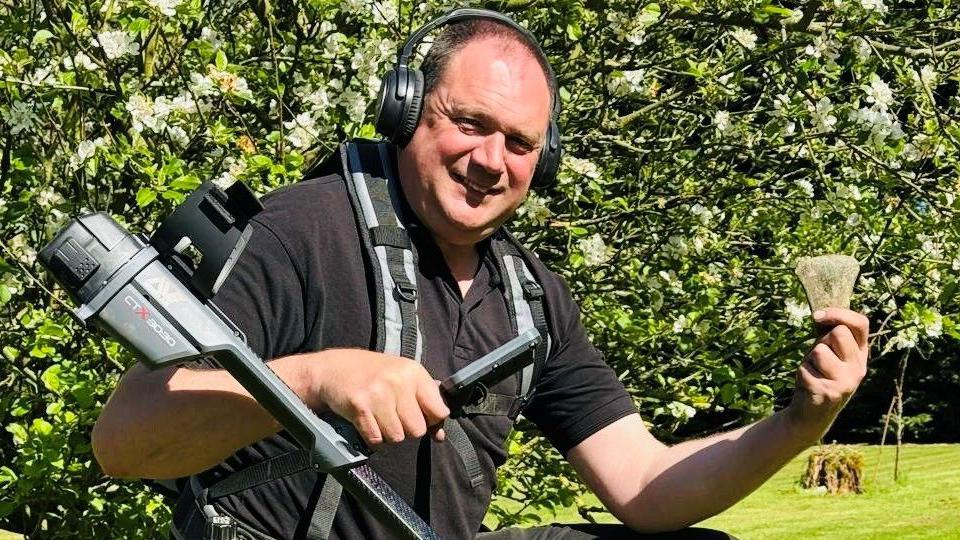
Cameron Anderson was amazed with his find
- Published
A metal detectorist has described his amazement after finding all three parts of what is believed to be a Bronze Age axe head in a field at his family farm.
Cameron Anderson, 45, made his initial discovery near Turriff in Aberdeenshire last week, then found the two other missing pieces in the following days.
He has alerted experts about the axe head, which is thought to be about 4,000 years old.
"This is by far the oldest and most important thing I have found," Mr Anderson told BBC Scotland News.
He has been a metal detector enthusiast for about 20 years - but said getting a new, more advanced detector from his wife for Christmas had greatly improved what he was able to find.
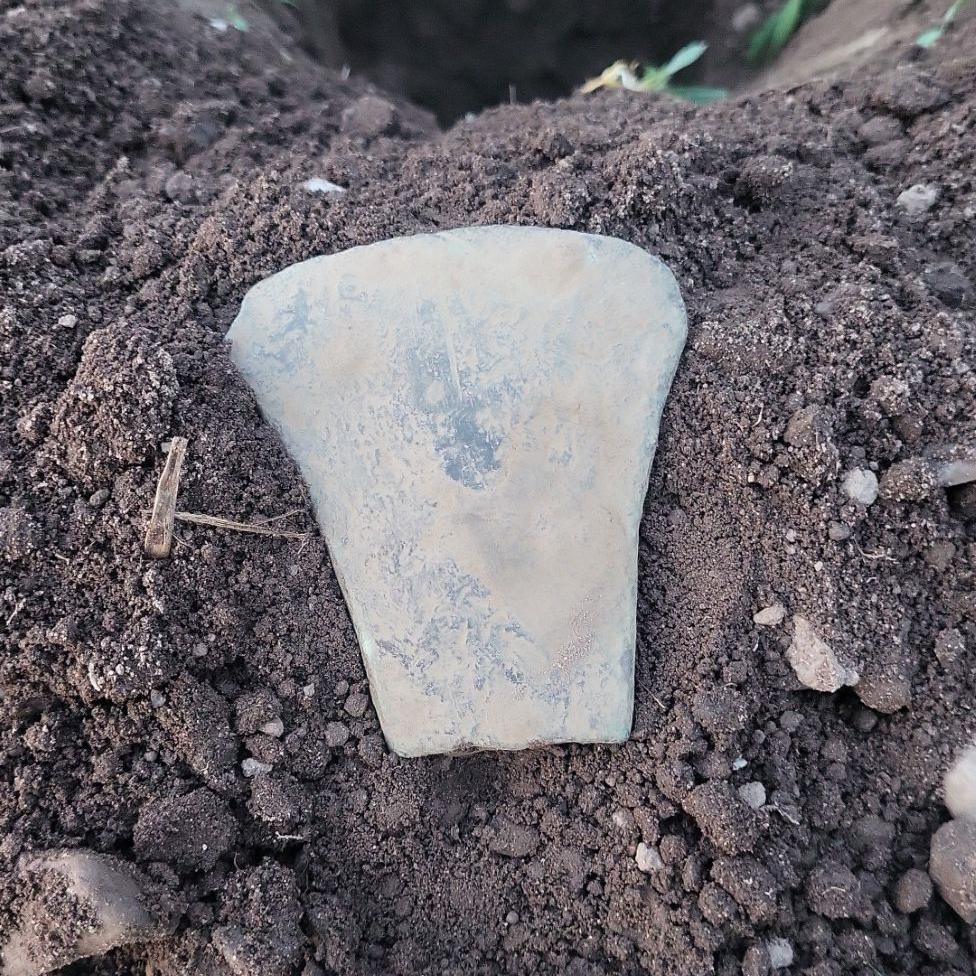
The axe head was found in an Aberdeenshire field
Mr Anderson, who works in the oil and gas industry, lives on the farm which is run by his family.
He described how he made the find on Wednesday last week.
"I go from field to field, and I got a really good signal so started digging down," he said.
When he didn't find anything, he passed over the area again, then started to think it had maybe just been a bit of ploughing metal, so started to fill in the hole and stamp it down.
"Then I got a good display reading, so thought 'there's something there'," he said.
"There's a saying with metal detectorists - 'if in doubt, dig it out'."
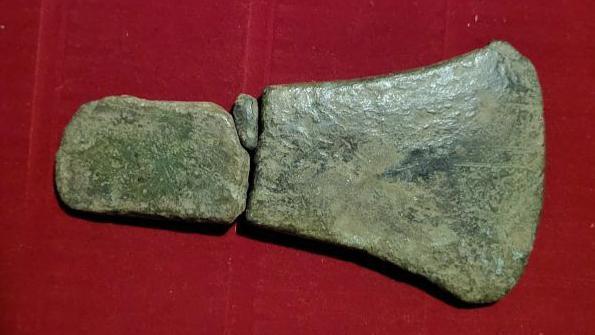
Three pieces of the axe head were found
Mr Anderson said he dug down about half-a-metre through sandy soil.
"There was the axe head, I knew immediately what it was," he said. "I thought 'wow'."
He went back the next day to resume searching, and found another piece of the bronze axe head at the opposite end of the field.
"I realised there was a third small part missing, and I thought maybe I had missed it. It was a needle in a haystack, but I then found that third shard on Sunday.
"The jigaw was complete after 4,000 years."
He has since contacted Treasure Trove Scotland at National Museums of Scotland in Edinburgh, which deals with important finds, as well Aberdeenshire Council.
A Treasure Trove spokesperson confirmed that the axe was believed to be early Bronze Age, and that they could often be found in Scotland.
However the spokesperson added: "Being able to reunite all three pieces is an interesting aspect of this example, and it is possible that axe was deliberately cut into pieces in the Bronze Age before being placed in the ground."
'Fascinating glimpse into life'
Bruce Mann, the senior historic environment officer with the local authority, was able to confirm the find was an early Bronze Age flat axe head, likely around 3,800 to 4,200 years old.
He said such axes appeared in Scotland at the start of the introduction of metalwork and described them as "prestigious items".
"The change between the old world of stone to the new one of metal would have had a profound impact on communities at the time," he said.
"Whether cast locally or traded from elsewhere, it is a fascinating glimpse into life at the time.
"By taking the time to report this find, Mr Anderson has added a little more to the understanding of our shared past."
Finder Mr Anderson said one theory was the axe head he dug up may have been deliberately broken up and sacrificed.
"The farm has been in the family for generations," he said.
"It's our own history here."
He said he hoped that after assessment by Treasure Trove Scotland it could eventually find a home at a museum in the north east of Scotland, so it remains in the local area for future generations to see.
Related topics
- Published4 May
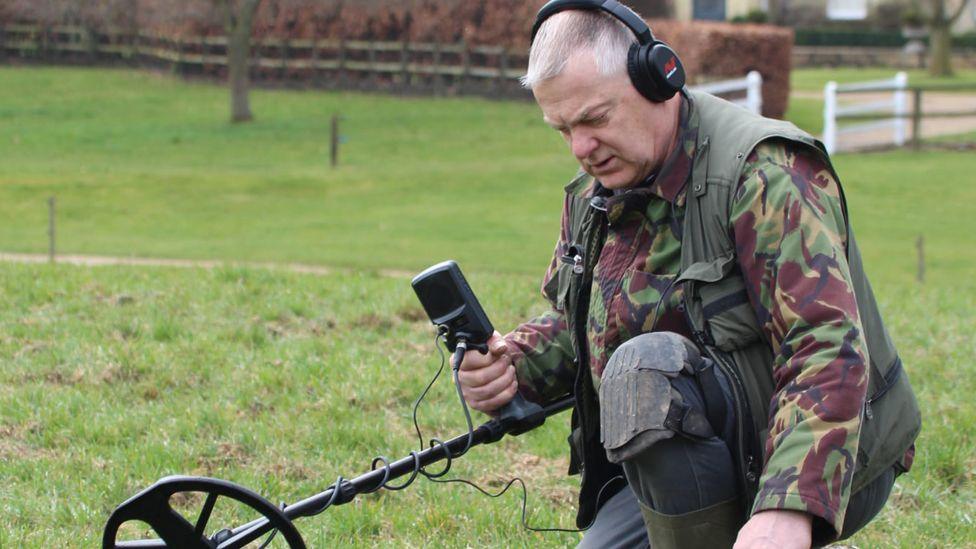
- Published26 January
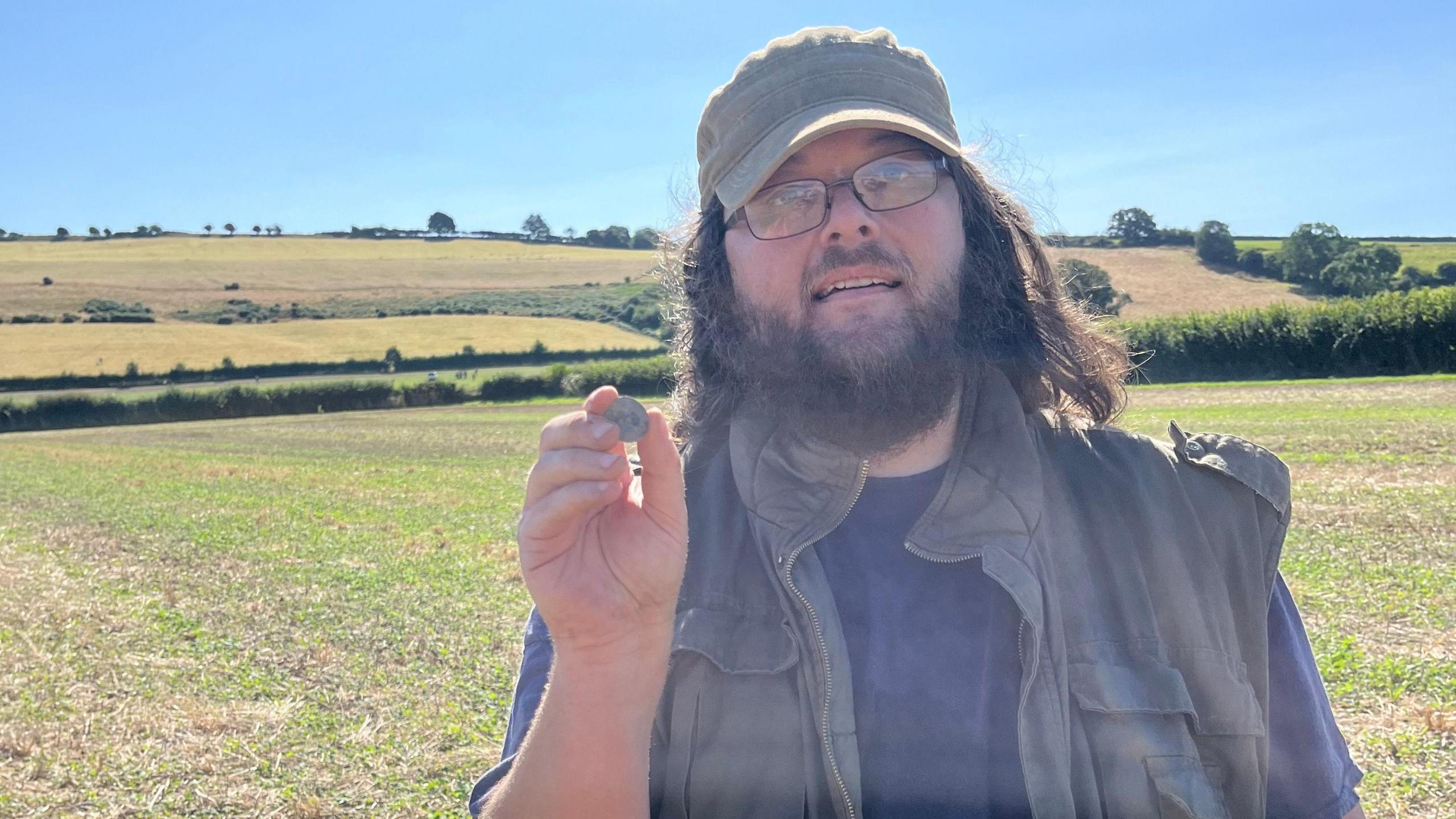
- Published22 July 2024
